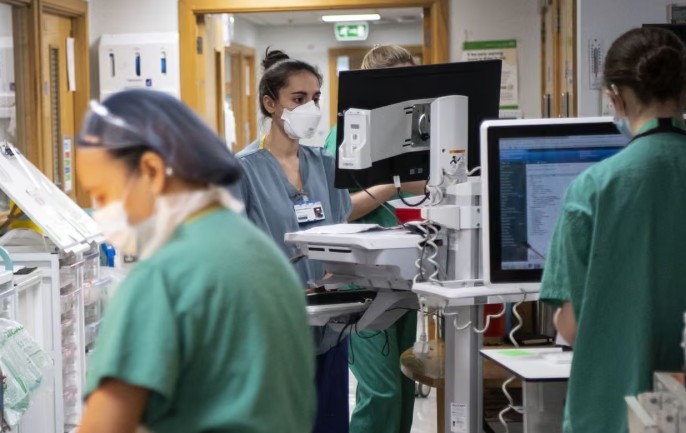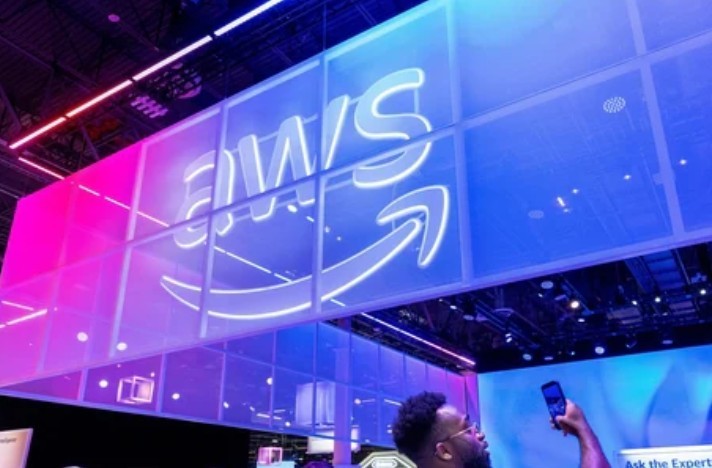Top 10 Insanely Cheapest Places To Travel In South Korea Today
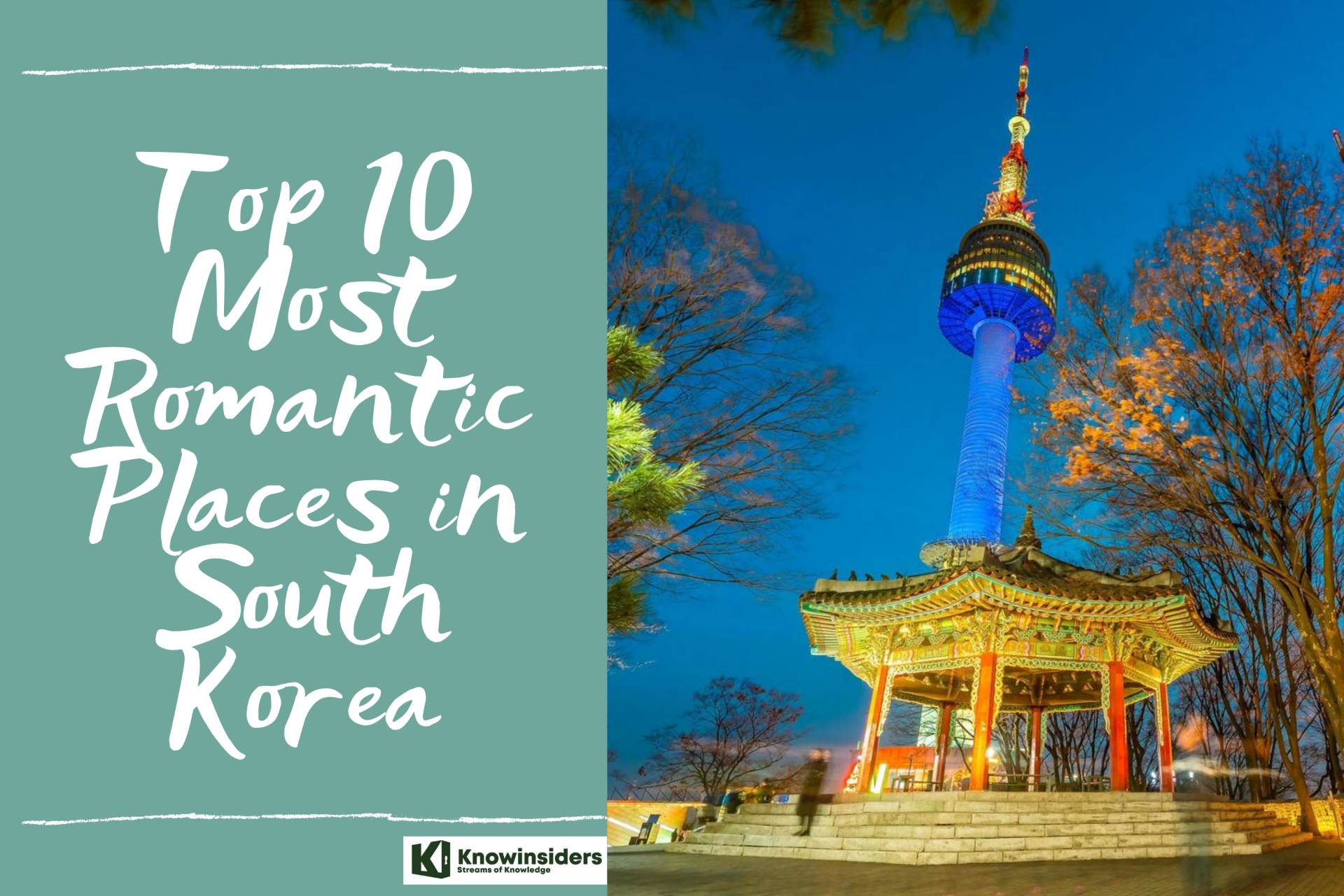 Top 10 Most Romantic Places in South Korea Top 10 Most Romantic Places in South Korea |
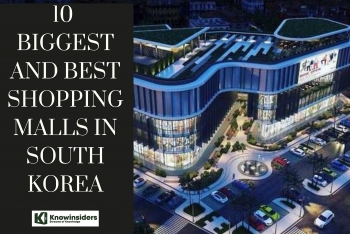 10 Biggest and Best Shopping Malls For Foreigner in South Korea 10 Biggest and Best Shopping Malls For Foreigner in South Korea |
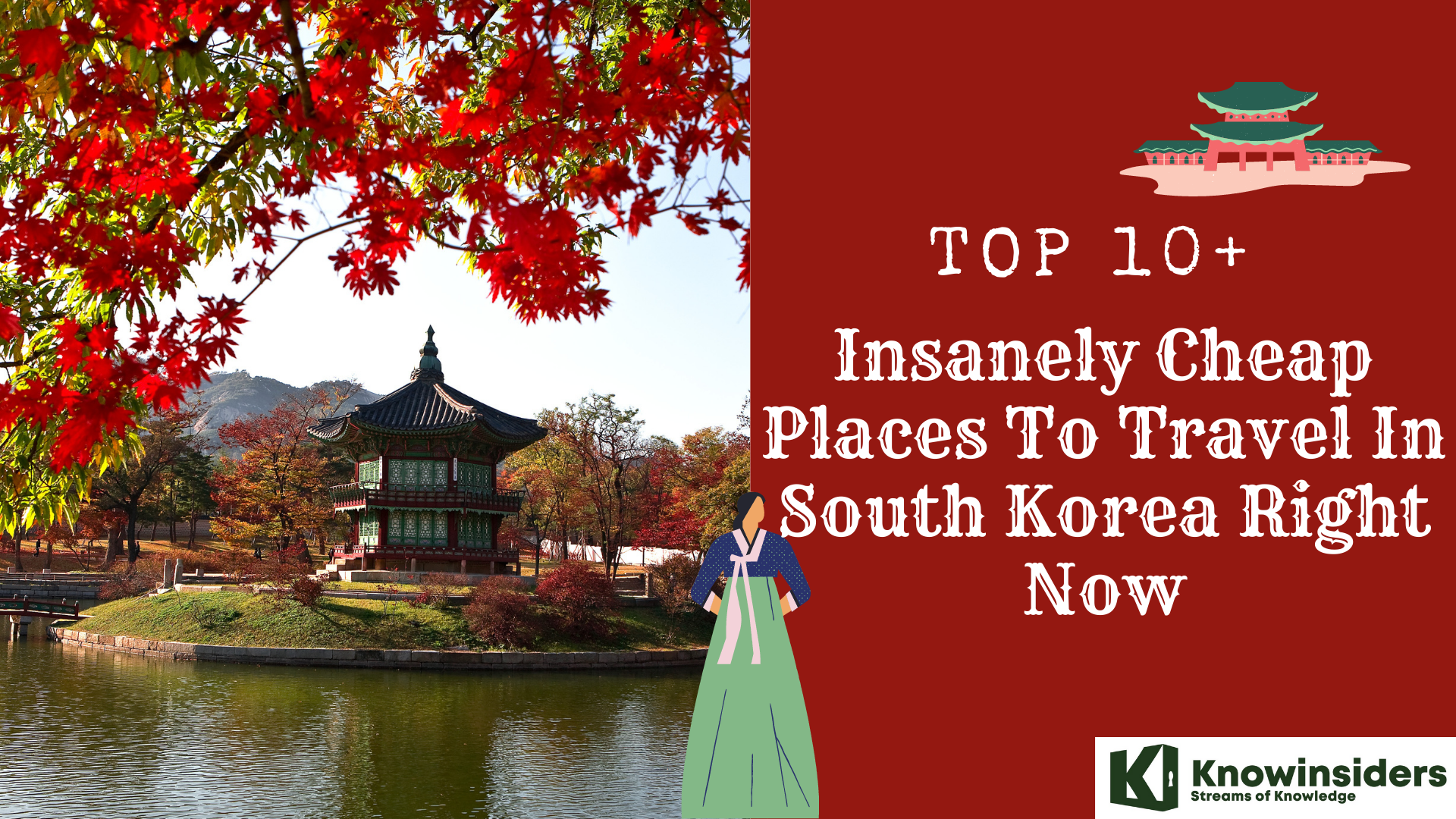 |
| Top 10+ Insanely Cheap Places To Travel In South Korea Right Now |
| Table of Content |
South Korea, the enigmatic, unique kingdom, beckons every tourist and traveller to explore its many wonders. When it comes to locations to visit in South Korea, you'll be spoiled for choice, since the country has an incredible selection of undiscovered natural wonders and urban delights.
An interesting fact about South Korea is that most people only know about the capital city, Seoul, and believe it is the only destination worth visiting in the country. That, however, is not the case. Here are some of the most incredible sites in South Korea that you can visit and explore on a budget.
How to travel around South Korea on a budget
1. Hop on the KTX Express for all your inter-province travels
When travelling via the KTX, foreigners can get the Korail Pass: A discounted pass that lets you travel around unlimitedly for a certain number of days! For instance, you can travel to Seoul, Jeonju, and Busan in a span of ten days without having to burn a hole in your pocket.
The best part? It’s a convenient and reliable transport service that you can hop back on if you wish to continue on your journey.
2. Get a T-Money card for transportation (and more)
Get a T-Money card to cut the cost of your subway, bus, and cab rides if you're traveling in Korea on a tight budget.
In other words, using your T-Money card will result in much lower fares than purchasing single-trip tickets. Transfers from the subway to the bus might also be cost-free, depending on the bus's color code and the distance traveled. The most important benefit of carrying a T-Money card is that it eliminates the need to wait in line for single-journey tickets or look for change when taking the bus. T-Money is accepted in many local governments, including those in Seoul, Busan, Incheon, Daejeon, and Daegu.
3. Skip the hotels and stay at a hostel instead
There are many unique and cozy hostels in South Korea. Although these hostels typically don't offer breakfast buffets, you can still expect all the essentials like cereal, bread, and eggs, as well as coffee, tea, and juice.
Anyway, with so many cafes lining the streets of Korea, it won't take you long to find a delicious place to start your day at!
4. Exchange work for free accommodation
Snatching up a free deal perfectly describes cheap travel in South Korea! Therefore, why not work for a free room if you plan to stay in Korea for a few weeks or a month? The fact that most hostels only ask you to work for at least three hours per day in exchange for free lodging and meals is undoubtedly the best part.
Additionally, you have the option of WWOOFing, which entails working on an organic farm in return for food and lodging.
5. Join a free guided tour
Yes, you read that right. Group tours don't actually cost a lot of money.
For instance, guided tours are offered at historical and cultural sites without costing anything. It's also a great way to meet other travelers and discover the city's undiscovered attractions that aren't typically covered in guidebooks.
6. Prioritise tourist spots with no admission fee
The easiest way to budget travel in Korea is by heading to tourist spots that are free of charge! Our favourites in the provinces around the country are:
Seoul‘s Bukchon Hanok Village, Han River, Ihwa Mural Village, Cheonggyecheon Stream, and Dongdaemun Design Plaza
Busan‘s Haedong Yonggungsa Temple, Haeundae Beach, Gwangalli Beach, and Gamcheon Culture Village
Jeonju‘s Hanok Village Omokdae, Deokjin Park, and Hanbyeokdang Pavilion
Incheon‘s Songwol-dong Fairy Tale Village, Wolmido, and Freedom Park
Reasons to visit South Korea
History and Culture
South Korea, which is rich in traditional culture, is proud of its past and heritage. Learn all about the nation's imperial past at one of the 11 UNESCO World Heritage Sites located in cities like Seoul, Gyeonggi, and Jeju. These sites include temples, palaces, and fortresses. Haeinsa Temple, Jongmyo Shrine, and the Royal Tombs of the Joseon Dynasty should be on your list of places to see.
Meal Feast
Similar to Indians, South Koreans place a lot of importance on food in their daily lives, and for good reason! Korean cuisine is superbly delicious. For the most part, regional dishes like kimchi, gimbap, and japchae are made with rice, vegetables, and meats. In South Korea, eating on the go is very common, and you can try freshly prepared vegetarian and non-vegetarian dishes at stalls dotted around the country.
Caffeine Culture
Coffee is very popular in South Korea. The nation's café culture is flourishing, with a large number of establishments, including both national and international branded chains, providing a hot cup of brew whenever you'd like. The cafés are great places for people of all ages to gather for more than just coffee. A lot of South Koreans set up their virtual offices and work there in addition to socializing there.
Cosmetic Blitz
Worldwide distribution of Korean cosmetics is now complete. The pursuit of flawless porcelain skin and the "it" look has no bounds when popular K-pop bands are setting the standards for beauty. Treating yourself to a skin or hair treatment while visiting South Korea will make you feel and look younger. Who knows? While traveling, you might just discover the fountain of youth!
Buying Binge
South Korea is the best place in the world to indulge in retail therapy, the ultimate sport. You'll be spoiled for choice at the malls and markets in Seoul, in particular. For skincare products, visit Myeongdong. For trendy clothing and accessories, visit Ewha Woman's University Shopping Street. For products that are "made in Korea," visit Common Ground. For Korean crafts, visit Insadong Street. Expect to simultaneously feel overwhelmed and awed by the abundance of options.
What are the cheapest places to visit in South Korea?
1. Ujeongbu
Due to its proximity to Seoul to the north, Uijeongbu is easily accessible by bus or subway.
North of the Korean capital Seoul, Uijeongbu commands a natural choke point across the primary traditional invasion route from the North into Seoul. It is located inside a defile with mountains on two sides. As a result, it retains military importance and is home to Korean and American bases that are positioned to defend the Korean capital. The U.S. Second Infantry Division has set up camp in Uijeongbu, with the majority of its soldiers coming from Dongducheon city.
Despite being known for its military presence, the region has developed into a satellite neighborhood of Seoul, complete with stores, theaters, restaurants, bars, PC bangs, and DVD bangs. It is well-liked by English hagwon (a for-profit private institute, academy, or cram school), in addition to American service members. Many mountains exist, including Mt. Dobong (Dobongsan), Mt. Surak, and Mt. Soyo. Residents of the Seoul Metropolitan area frequently visit the mountains, which are well-liked hiking destinations.
Additionally, this city is well-known for its hot dog and SPAM-based budae-jjigae (also known as "army base stew"). Many people wanted the dish to be called Uijeongbu jjigae in the late 20th century to get rid of the military or wartime associations it had. But not many restaurants adhered to this rule. Some eateries have started referring to their food as Uijeongbu budae jjigae. A street with a high concentration of eateries serving army base stew is known by the locals as "buddaejjigae street" and is located in the city.
A 7-day trip to Uijeongbu costs, on average, $1,600 for a single traveler, $2,874 for a couple, and $5,387 for a family of four. Hotels in Uijeongbu cost between $40 and $184 per night, on average $54, while most vacation homes cost between $80 and $420 per night. Gimpo International Airport (GMP) average international flight costs range from $1,307 to $1,841 per person for economy class travel and from $4,101 to $5,777 for first class. Depending on the day's activities, we advise setting aside $34 to $52 per person per day for travel and dining at nearby establishments.
How affordable is a trip to Uijeongbu? For travelers prepared to take standby flights, put up with inconvenience, and otherwise minimize travel costs, the least expensive trip to Uijeongbu costs about $132 per person per day. Vacation rentals can be reserved for as little as $20 per night, or about 8% of total rentals are available for between $0 and $100. These low-cost accommodations must be reserved as soon as possible and might not be in the most desirable locations. There are more likely to be 1-star hotels available, with rates beginning at about $33.
2. Paju
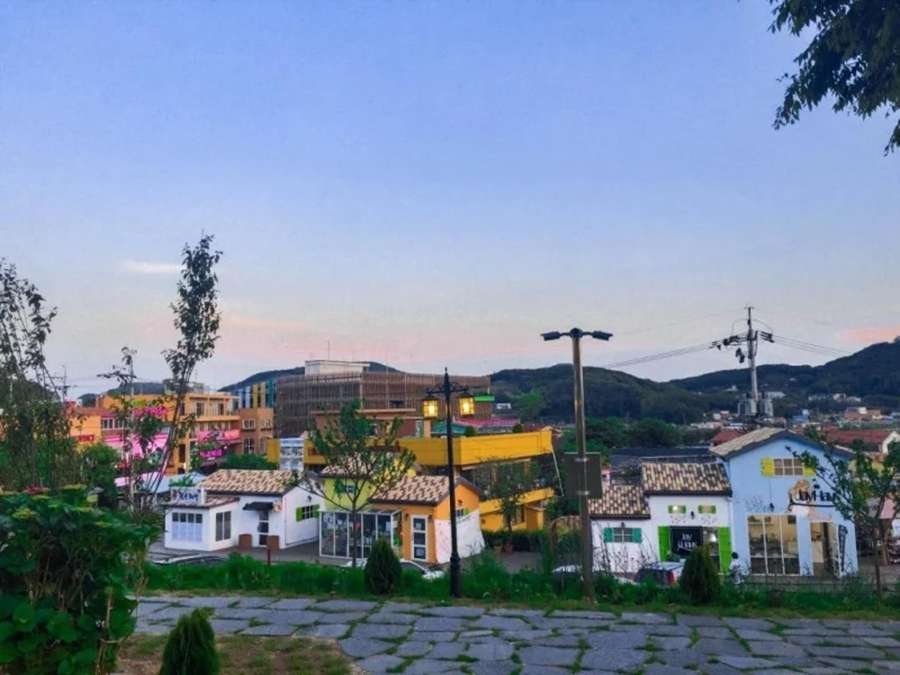 |
| Photo: Gody |
South Korea's Gyeonggi Province contains the city of Paju. Paju was previously a county but became a city in 1997.
The city of Paju, which is situated on the 38th parallel just south of Panmunjeom, has a total area of 672.78 km2 (259.76 sq mi). Paju had a population of over 427,000 in 2015. Numerous bases of the South Korean and American armies have been established nearby to defend Seoul, the capital of South Korea. The northernmost train station in South Korea, Dorasan, opened its doors in 2002. From Mount Dora in the city, one can see Kaesong City and North Korean territory.
Paju City has low-type geographic characteristics to the east and west. Eastern Paju is home to a number of mountains that come together to form the border with Yangzhou. Mountains in Paju's northern region define its border with Goyang. Additionally, some lower mountains extend southward from central Paju. Imjin River and Han River are Paju's two main rivers. Han River flows in the western region south of Paju, while Imjin River flows between the northern west and west. Paju experiences an average annual temperature of 10.5 °C, with an average low of -4 °C in January and an average high of 25 °C in August. Finally, Paju receives about 1,300mm of precipitation each year.
Attractions for travelers
Heyri Art Valley is the biggest art community in South Korea, and it draws tourists because of its diverse artistic styles and emphasis on Korean culture. The neighborhood has artist-designed residences, studios, galleries, museums, and performance venues. Its name, Heyri, comes from a Paju farming song and it was planned since 1998. When making their plans, architects tried to incorporate the valley's valley view. Every age group can enjoy the art performances held in the valley. Every weekend, tourists flock to the region because of the alluring theme, and in the spring and fall, when the valley hosts an art festival, more tourists come.
Jangdan bean: One of Paju's well-known traditional specialties is jangdan bean. Because of the suitability of the land and environment for agriculture, crops have been significant for the livelihood of the Korean people for a very long time. As a result, two important crops—rice and beans—have evolved over time. One of these crops that has been harvested in Paju is the jangdan bean. Before the Korean War, there was a village in Paju with the same name as Jangdan. Because the former village was so well known for these beans, even though the village has since disappeared, people still refer to the bean as the Jangdan bean. Jangdan beans are now primarily found in Panmunjom, a border town between South Korea and North Korea.
A 7-day vacation to Paju costs, on average, $1,797 for a single traveler, $3,227 for a couple, and $6,050 for a family of four. Paju hotels have nightly rates that range from $32 to $209, with an average of $72, while the majority of vacation homes cost $60 to $660 per night for the whole house. Gimpo International Airport (GMP) average international flight costs range from $1,307 to $1,841 per person for economy class travel and from $4,101 to $5,777 for first class. We advise setting aside between $36 and $80 per person per day, depending on the activities, for dining out at nearby restaurants.
When to Travel Cheaply to Paju, Korea
The cheapest times, on average, to travel to GMP and stay in a Paju hotel are as follows:
8 January to 18 March
20 August to 9 December
In general, late October to early November are the most affordable times to travel to Paju.
How affordable can you make a trip to Paju? Travelers who are willing to take standby flights, put up with inconvenience, and otherwise minimize travel costs can get to Paju for about $134 per person per day. Vacation rentals can be rented for as little as $20 per night, which represents about 9% of all available rentals in the $0 to $100 range. These low-cost accommodations must be reserved as soon as possible and might not be in the most desirable locations. There are more likely to be 1-star hotels available, with rates beginning at about $28.
 Top 10 Most Beautiful K-pop Idols Without Makeup Top 10 Most Beautiful K-pop Idols Without Makeup |
3. Nonsan
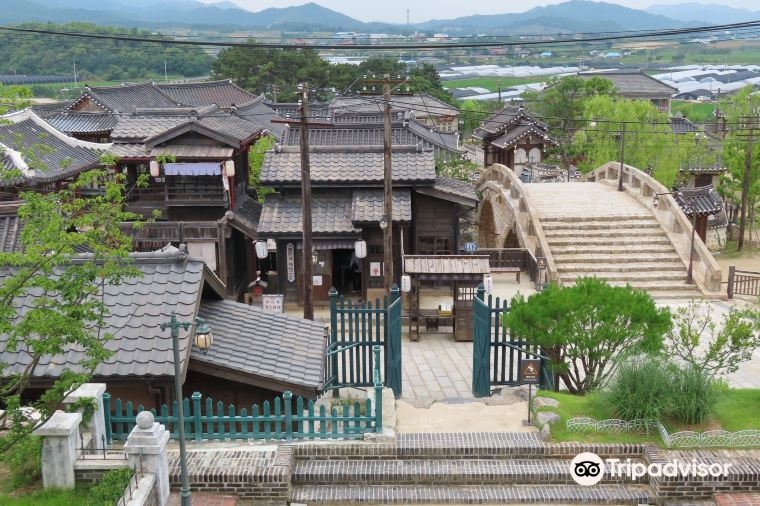 |
| Photo: TripAdvisor |
South Korea's South Chungcheong Province contains the city of Nonsan. The coordinates are 36°12′N 127°5′E. According to legend, the small garden "Nolmoe," which rises amidst agricultural land and is said to reflect geographical features such as mountains and rice paddies, is where Nonsan's place names originated. The metropolitan area of Daejeon includes the city.
Nonsan has had a long history.[2] Nonsan is thought to have been a part of Mahan territory during the Samhan era. The district belonged to Hwangdeungyasan-gun during the Baekje era. It is believed that Nonsan was the general location of the pivotal conflict in which Silla defeated Baekje. Nonsan was later divided into the towns of Deogeun and Hwangsan during the Silla period.
The rail line through the Nonsan plain was finished in 1911, the same year the train station was constructed.
In 1914, the four counties of Yeonsan-gun, Eunjin-gun, Noseong-gun, and Seoksung-gun were merged to form the current city of Nonsan.
The United States and South Korea established a POW camp during the Korean War. Thousands of POWs fled their prison camps on June 18, 1953, in order to avoid being sent back to North Korea, at the Nonsan camp as well as at the POW camps in Busan, Masan, and Kwangju.
A 7-day trip to Nonsan costs, on average, $892 for a single traveler, $1,602 for a couple, and $3,003 for a family of four. While most vacation rentals cost between $100 and $520 per night for the entire home, Nonsan hotels range from $50 to $230 per night with an average rate of $85. The average price of a flight from anywhere in the world to Kunsan AB Airport (KUV) is between $212 and $231 per person for first class, and $665 to $725 for economy. Depending on the day's activities, we advise setting aside $35 to $69 per person per day for travel and dining out.
How affordable can you make a trip to Nonsan? Travelers who are willing to take standby flights, put up with inconvenience, and otherwise minimize travel costs can get to Nonsan for about $85 per person per day. Vacation rentals can be reserved for as little as $100 per night, or about 2% of total rentals are available in the range of $0 to $100. These low-cost accommodations must be reserved as soon as possible and might not be in the most desirable locations. There are more likely to be 1-star hotels available, with rates beginning at about $42.
4. Changwon
 |
| Photo: Gody |
Gyeongsangnam-do's capital is Changwon, which is located on South Korea's southeast coast. As of 2015, Changwon had a population of 1.07 million, making it the ninth-most populous city in South Korea.
Masan Bay to the south and the cities of Busan and Gimhae to the east encircle Changwon, a port city. To the northeast is the city of Miryang, and to the west is Jinju.
The area has been inhabited since the Bronze Age, and throughout history, its urban areas have undergone numerous renaming and reorganization processes. The three historically interdependent cities of Masan, Jinhae, and Changwon started to experience significant economic development in 1974 with the establishment of the Changwon National Industrial Complex, becoming a significant industrial hub. The current city of Changwon was created on July 1st, 2010, through the merger of Changwon, Jinhae, and Masan.
Changwon, the first planned city in Korea, was based on Canberra, Australia, and uses open urban planning techniques, such as numerous parks and distinct residential and industrial areas. The municipality of the city has positioned itself as a "environmental capital" by actively participating in climate change conferences and committing to the creation of sustainable policies like the widely known Nubija bike-sharing program.
Being a planned city, Changwon was constructed to have more greenery than many other Korean cities, including dozens of parks, gardens, trails, and plazas. Numerous beaches can be found in the city because of its coastal location.
A few well-known parks in Changwon are the ecological reserve Jinhae Dream Park, the reservoir and bird sanctuary Junamjeosuji, the hanok village and educational facility House of Changwon, and the Changwon Marine Park on Dotseom Island.
The Changwon Exhibition Convention Centre (CECO) is located in Changwon.
Gyeongsannam-do's capital and largest city, Changwon, is a hub for media production in the region. It is also the location of the Kyongnam Shinmun newspaper and television and radio station Changwon KBS, which annually hosts the K-Pop World Festival.
A 7-day trip to Changwon costs, on average, $1,328 for a single traveler, $2,385 for a couple, and $4,471 for a family of four. While most vacation rentals in Changwon cost between $120 and $420 per night for the entire home, Changwon hotels range from $35 to $160 per night with an average price of $42. Gimhae International Airport (PUS) typically costs $853 to $1,386 per person on international flights in economy, and $2,677 to $4,349 in first class. Depending on the day's activities, we advise allocating $25 to $46 per person per day for travel and dining out.
How affordable is a trip to Changwon? Travelers willing to take standby flights, put up with inconvenience, and otherwise minimize travel costs can get to Changwon for about $107 per person per day. Vacation rentals can be rented for as little as $80 per night, which represents about 1% of all available rentals in the $0 to $100 range. These low-cost accommodations must be reserved as soon as possible and might not be in the most desirable locations. There are more likely to be 1-star hotels available, with rates beginning at about $29.
5. Pohang
 |
| Photo: Wikipedia |
Pohang is a city in the province of North Gyeongsang, South Korea, and a main seaport in the Daegu-Gyeongbuk region. The built-up area of Pohang is located on the alluvium of the mouth of the Hyeongsan River. The city is divided into two wards (gu), Buk-gu or Northern Ward (북구; 北區) and Nam-gu or Southern Ward (남구; 南區).
This city has the third-largest land area of any city (si) in South Korea and the largest population in North Gyeongsang Province.
Each summer, thousands of people come to Yeongildae Beach to watch the fireworks display. To see the show, people travel from all over the nation. The 1995-opened Culture & Arts Center hosts performances and exhibitions in its various theaters and galleries. Pohang hosts an annual Gwamegi Festival and is known for its gwamegi. The Gwamegi Festival is held every November. In 2015, people of all ages were invited to the festival. The festival is open to a large audience and is supported by banks like Suhyeop, Nonghyeop, Shinhan, and POSCO. It is possible to experience old traditional Korean culture during the festival, such as competing with someone who sells yeot. Additionally, a large number of singers from different countries, including the Philippines, are invited to perform for the public. You can sample Gwamegi, dried squid known as Pidegi, and large crabs in Guryongpo.
Near the city's center and the port, there is a sizable, active traditional market called the Jukdo Market. It is well known as a significant seafood market throughout Korea. Restaurants serving raw fish are widely available. Here, fish is less expensive than in Daegu or Seoul.
Duho-dong, which is in the northern part of the city's built-up area, is where Bukbu Beach is situated. Commercial developments like bars, restaurants, and low-cost lodgings dubbed Yeogwan have centered on the beachfront. Just north of the developed area are a number of Sea of Japan beaches, including Chilpo and Wolpo.
East of the city of Pohang in the Daebo-myeon region is a point of land known as Homigot that protrudes into the Sea of Japan. Given that Homigot is one of the easternmost points on the Korean peninsula, thousands of people gather there each year to witness Korea's first sunrise of the New Year. The 'Hands of Harmony' sculpture is also located on the beach.
Major Buddhist temple Bogyeongsa is located in Songna-myeon, a region in the far north of Pohang, at the foot of Mount Naeyeon (710 m), in a steep, green valley. The same mountain valley is home to Yeonsan Waterfall, which is close by. From the temple, there are hiking routes that ascend into the mountains. Additionally, Bogyeongsa is close to a number of mountain hermitages.
The Oeosa Temple is situated in the far southern region of Pohang, just inside the mountains south of the Naengcheon River's created coastal plain. It is situated in a narrow valley in Daesong-myeon at the base of Mt. Unjae (481 m). The well-traveled Silla monk Wonhyo, according to signs erected in and around Oeosa, is credited with founding the temple.
A 7-day trip to Pohang costs, on average, $753 for a single traveler, $1,352 for a couple, and $2,535 for a family of four. Hotels in Pohang cost between $39 and $179 per night, on average $56, while most vacation homes cost between $120 and $480 per night. Pohang Airport (KPO) typically costs $226 to $226 per person on international flights in economy, and $709 to $709 in first class. We advise setting aside $30 to $63 per person per day, depending on the activities, for transportation and dining out at nearby establishments.
How reasonably priced is a trip to Pohang? Travelers who are willing to take standby flights, put up with inconvenience, and otherwise minimize travel costs can get to Pohang for about $74 per person per day. Vacation rentals can be rented for as little as $100 per night, which represents about 1% of all available rentals in the $0 to $100 range. These low-cost accommodations must be reserved as soon as possible and might not be in the most desirable locations. There are more likely to be 1-star hotels available, with rates beginning at about $31.
Prices range from a high of $226 on average in mid-October to a low of $226 in mid-October for flights all over the world. The typical flight costs $226. Millions of flights were used to determine these prices. Our data for Pohang includes 2 airlines and 2 airports of origin. Compared to other places, the area's price variation is less.
 Top 15 Hottest K-Pop Female Rappers in 2023 Top 15 Hottest K-Pop Female Rappers in 2023 |
6. Jeonju
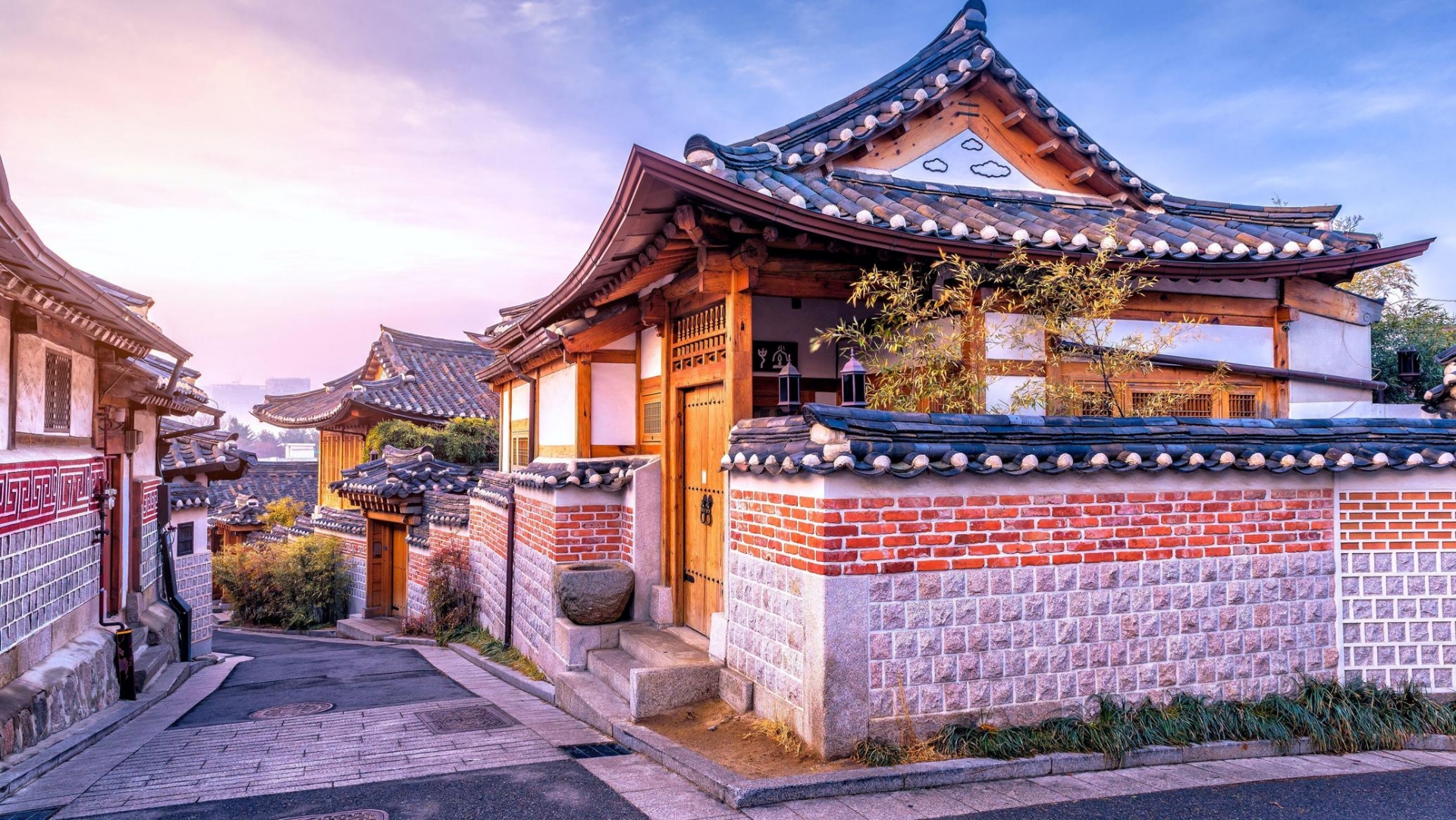 |
| Photo: planetofhotels |
Jeonju is the 16th largest city in South Korea and the capital of North Jeolla Province. It is both urban and rural due to the closeness of Wanju County which almost entirely surrounds Jeonju (Wanju County has many residents who work in Jeonju). The name Jeonju literally means "Perfect Region" (from the hanja 全 (전; jeon) for perfect, 州 (주; ju) for region). It is an important tourist center famous for Korean food, historic buildings, sports activities, and innovative festivals.
In May 2012, Jeonju was chosen as a Creative Cities for Gastronomy as part of UNESCO's Creative Cities Network. This honour recognizes the city's traditional home cooking handed down over thousands of years, its active public and private food research, a system of nurturing talented chefs, and its hosting of distinctive food festivals.
Jeonju bibimbap 전주비빔밥, a traditional local food, is well known across South Korea. There are several very popular vegetarian restaurants serving Jeonju style food and pine wine.
Exhibited at the National Jeonju Museum are antiquities from the Baekje era.
Numerous royal museums, temples, a hilltop castle fort, a well-known paper museum, a yearly paper fashion show showcasing the most recent trends, and traditional Korean clothing made of paper are all present.
With over 800 traditional "hanok" style buildings, Jeonju's Hanok Village (Hanok Maeul) is a traditional-style village in the city. There are numerous traditional tea shops, gift shops, and dining establishments there.
On the site of the Korean Catholic martyrs in 1791 and 1801, French priest Xavier Baudonet constructed the Jeongdong Catholic Church between 1908 and 1914. The Korea National Treasure No. 288 is this Byzantine and Romanesque church.
2014's Songlines list of the 25 Best International Festivals included the Jeonju International Sori Festival.
Every year, the Jeonju International Film Festival receives around 50,000 visitors.
The international Battle of the Year champion breakdancing group Last for One is from Jeonju.
Due to its rural location, the nearby mountains and parks are a favorite destination for outdoor recreation. There are historic locations nearby. In addition to the Hanguk Sound and Culture Hall, a sizable, contemporary concert venue on the campus of Chonbuk National University, the city has a zoo and a park.
A 7-day trip to Jeonju costs, on average, $717 for a single traveler, $1,288 for a couple, and $2,414 for a family of four. Hotels in Jeonju cost between $40 and $181 per night, on average $51, while most vacation homes cost between $140 and $320 per night. The average price of a flight from anywhere in the world to Kunsan AB Airport (KUV) is between $212 and $231 per person for first class, and $665 to $725 for economy. We advise setting aside $28 to $62 per person per day, depending on the activities, for transportation and dining at nearby restaurants.
How affordable can you make a trip to Jeonju? Travelers who are willing to take standby flights, put up with inconvenience, and otherwise minimize travel costs can get to Jeonju for about $63 per person per day. Vacation rentals can be rented for as little as $20 per night, which represents about 4% of all available rentals in the $0 to $100 range. These low-cost accommodations must be reserved as soon as possible and might not be in the most desirable locations. There are more likely to be 1-star hotels available, with rates beginning at about $32.
Depending on what you want to do during your vacation, your daily costs will vary more. A standard nice meal might cost around $15 per person, while a fine dining restaurant with drinks around Jeonju can easily cost $230 per person or more. Although self-guided tours to see the outdoor sights can be free, private tours can cost up to $452 per day. Recommendations are made based on the cost of living and averages we observe for this kind of vacation because costs vary greatly.
7. Sejong
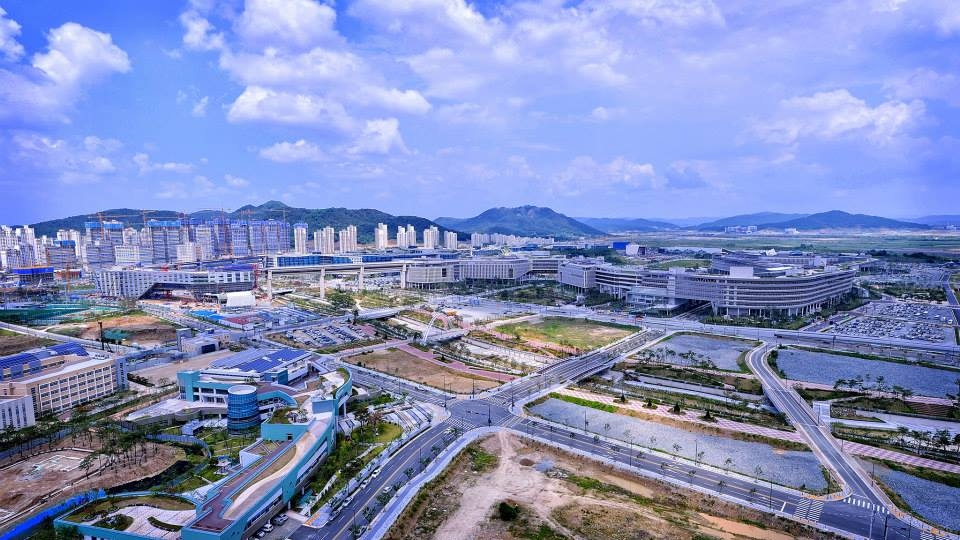 |
| Photo: Asia Media Centre |
Sejong, officially the Sejong Special Self-Governing City[2] (세종특별자치시; 世宗特別自治市), is a special self-governing city and de facto administrative capital of South Korea.
In order to relieve congestion in South Korea's current capital and largest city, Seoul, and to promote investment in the country's central region, Sejong was established in 2007 as the country's new planned capital from many areas of the South Chungcheong province and some areas of the North Chungcheong province. Although the South Korean government has moved many ministries and agencies to Sejong since 2012, many still call other cities, particularly Seoul, home, including the National Assembly and many other significant government bodies.
Sejong is the least populous and smallest first-level administrative division in South Korea, with a population of 351,007 as of 2020 and an area of 465.23 km2 (179.63 sq mi). Sejong, which borders South Chungcheong to the west, Daejeon Metropolitan City to the south, and North Chungcheong to the east, is situated in the west-central Hoseo region.
In 2030, the city's construction should be finished. All governmental institutions ought to be relocated to Sejong in the same year. In 2030, 500,000 people are anticipated to reside there.
Sejong Lake Park was finished in March 2013 and features a number of theme-related amenities, such as the square fountain. The lake area is 322,800 square meters, and the size is 705,768 square meters.
The National Sejong Arboretum is Korea's largest indoor arboretum and the country's first urban arboretum. There are 1.72 million plants available, representing 2834 species. For adults, there is a 5,000 won admission charge.
located in the southern part of Korea, The South Korean municipality of Sejong includes Sejong. In the city of Sejong, people reside.
Here are some quick facts about the region and current price trends: According to our cost of living index, Korea, South is ranked 16th, which indicates that it is a very expensive place to visit and live, with a high standard of living but high travel expenses.A meal at a street vendor may occasionally be less expensive but is still expensive, and restaurant prices are generally thought to be high.Although there are some more affordable food chains, supermarket shopping is still relatively expensive when compared to other nations.
In Sejong, a bus or train fare runs about $1.74 USD.
However, if you intend to travel throughout the region frequently, you may want to purchase a monthly pass for public transportation, which in Sejong costs about 49.44 USD.
If you decide to take a taxi, be aware that in Sejong, the cost per mile is approximately US$1.3.
Here are some crucial figures to know if you intend to relocate to the city or lease an apartment for an extended period of time:
Cost of electricity
Sejong about 156.55 USD is the typical cost of electricity for a medium-sized apartment.
Internet cost
In Sejong, a home internet connection will set you back about 25.68 USD.
movie theater
In Sejong, the price of a movie ticket at a neighborhood theater is approximately $10.65 USD.
8. Gwangju
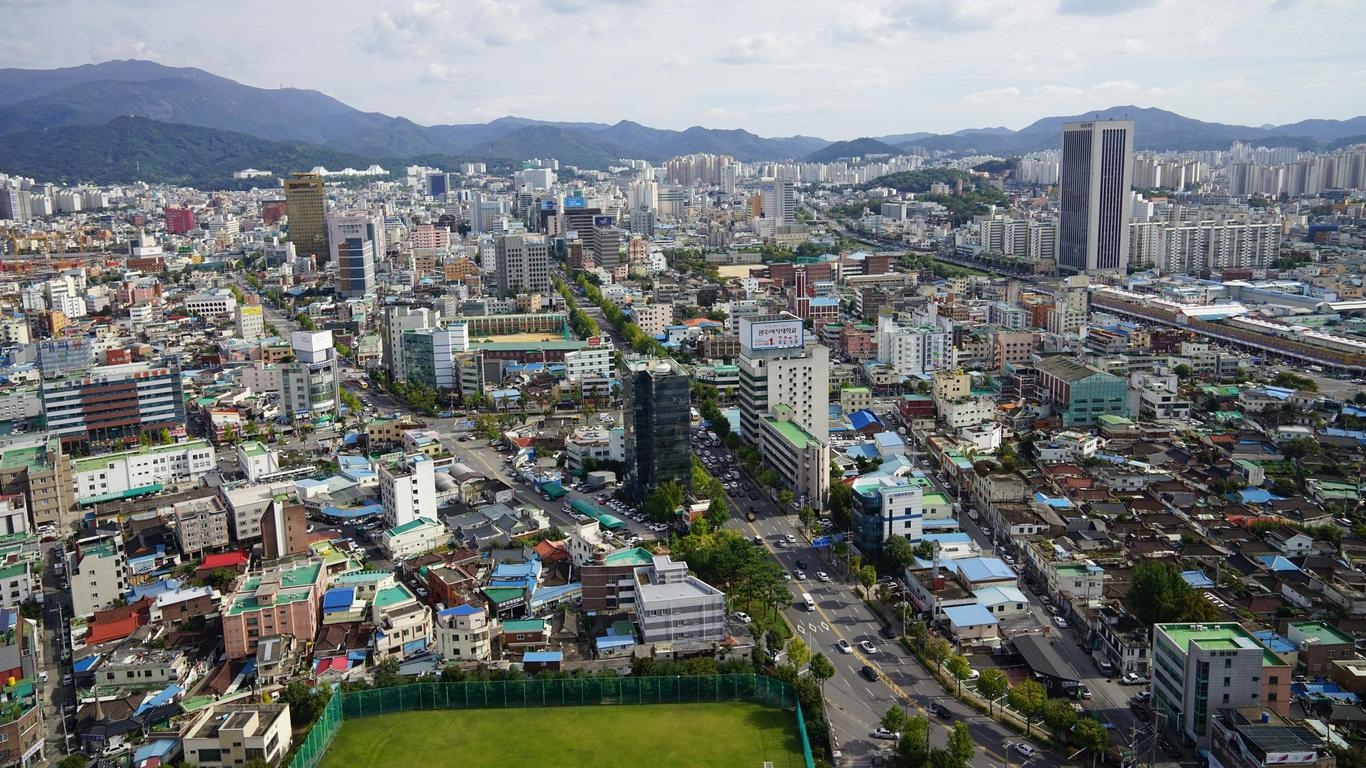 |
| Photo: Kayak |
Gwangju is the sixth-largest metropolis in South Korea. It is a designated metropolitan area directly supervised by the Home Minister of the federal government. When Gwangju was elevated to the status of a metropolitan city and became independent from South Jeolla province in 2005, the provincial office was relocated from the city to the southern village of Namak in Muan County.
Its name is made up of the words Gwang, which means "light" in Korean, and Ju, which means "province" in Hanja. Historically, Gwangju was known as Muju (; ), where "Silla merged all of the land to establish the provinces of Gwangju, Ungju, Jeonju, Muju and various counties, plus the southern boundary of Goguryeo and the ancient territories of Silla" according to the Samguk Sagi. The city, located in the agricultural Jeolla region, is renowned for its delectable cuisine.
There are four distinct seasons and year-round rainfall in Gwangju's cooler subtropical climate, with the summer East Asian Monsoon Season being the wettest time of the year.
Due to the city's southwesterly location on the Korean peninsula, winters there, while still cold, are milder than in Seoul and other cities further north. A lot of precipitation, especially in the form of thunderstorms, falls during the hot and muggy summer months. Due to its location, Gwangju ranks among the warmest cities in Korea during the summer.
A 7-day trip to Gwangju costs, on average, $1,124 for a single traveler, $2,019 for a couple, and $3,785 for a family of four. While the majority of vacation rentals cost between $100 and $420 per night for the entire home, Gwangju hotels range from $37 to $170 per night with an average rate of $53. The average price per person for an international flight to Gwangju Airport (KWJ) is between $682 and $1,021 for economy class, and $2,140 to $3,204 for first class. We advise setting aside $27 to $55 per person per day, depending on the activities, for transportation and dining at nearby restaurants.
How reasonably priced is a trip to Gwangju? Travelers who are willing to take standby flights, put up with inconvenience, and otherwise minimize travel costs can get to Gwangju for about $90 per person per day. Vacation rentals can be rented for as little as $20 per night, which represents about 9% of all available rentals in the $0 to $100 range. These low-cost accommodations must be reserved as soon as possible and might not be in the most desirable locations. There are more likely to be 1-star hotels available, with rates beginning at about $31.
The average cost of a flight around the world ranges from $682 in late November to early December to $1,021 in mid-December. The typical flight costs $368. Millions of flights were used to determine these prices. Our data for Gwangju includes 15 airlines and 8 originating airports. When compared to other places, the area's price variation is typical. The average trip fare to Gwangju from John F. Kennedy International (JFK) in New York, NY (the United States) is $1,532, which is obviously much more expensive than the average trip fare from Jeju International (CJU) in Jeju (South Korea), which is only $142.
9. Ulsan
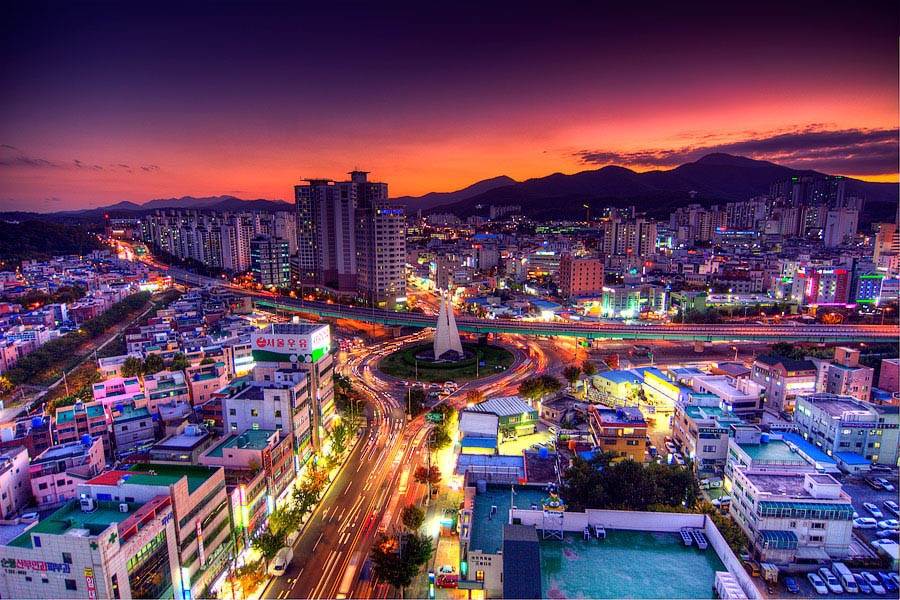 |
| Photo: Countryfactor |
With a population of more than 1.1 million, Ulsan—officially known as the Ulsan Metropolitan City—is the eighth-largest city overall and the seventh-largest metropolitan area in South Korea. It is situated in the southeast of the nation, bordering Gyeongju to the north and Busan to the south.
The center of the Ulsan Industrial District, Ulsan is South Korea's industrial powerhouse. It has the largest shipyard in the world, run by Hyundai Heavy Industries, the largest auto assembly plant in the world, and the third-largest oil refinery in the world, owned by SK Energy. Ulsan had the highest GDP per capita in South Korea in 2020, at $65,352.
The city's transportation division intends to construct a light-rail system. The public transportation is comparable to that of other significant Korean cities. At the majority of bus stops, the bus system displays an exact ETA.
More than 20 flights per day travel to and from Seoul's Gimpo International Airport from Ulsan Airport, which was built in 1970 and expanded in 1997. Four flights per week travel to and from Jeju International Airport. Ulsan was added to Korea's KTX high-speed train network in November 2010. With a traveling time of just over two hours, this offers a high-speed connection to Seoul. The nearby Eonyang neighborhood is home to the new KTX station (Ulsan Station), which is served by a number of express buses (5001–5005) as well as some city buses. Taehwa River Station is the new name of the original city station.
A 7-day trip to Ulsan costs, on average, $861 for a single traveler, $1,546 for a couple, and $2,899 for a family of four. Hotels in Ulsan cost between $31 and $101 per night, on average, while most vacation homes cost between $80 and $460 per night. The average price of a round-trip ticket from anywhere in the world to Ulsan Airport (USN) is between $123 and $714 for economy class, and $386 to $2,241 for first class. Depending on the day's activities, we advise setting aside $21 to $51 per person per day for travel and dining at nearby establishments.
How affordable can you make an Ulsan vacation? Travelers willing to take standby flights, put up with inconvenience, and otherwise minimize travel costs can get to Ulsan for about $54 per person per day. Vacation rentals can be reserved for as little as $60 per night, or about 14% of total rentals are available for between $0 and $100. These low-cost accommodations must be reserved as soon as possible and might not be in the most desirable locations. There are more likely to be 1-star hotels available, with rates beginning at about $25.
Prices range from a high of $714 on average in late July to a low of $123 in mid- to late-November for flights all over the world. The typical flight costs $239. Millions of flights were used to determine these prices. Our data for Ulsan includes 5 airlines and 6 originating airports. Compared to other places, the area's price range is significantly wider. The average round-trip fare for a flight to Ulsan from Washington Dulles International (IAD) in Washington, DC (the United States) is $2,508, which is obviously much more expensive than the average fare from Jeju International (CJU) in Jeju (South Korea), which is only $170.
10. Busan
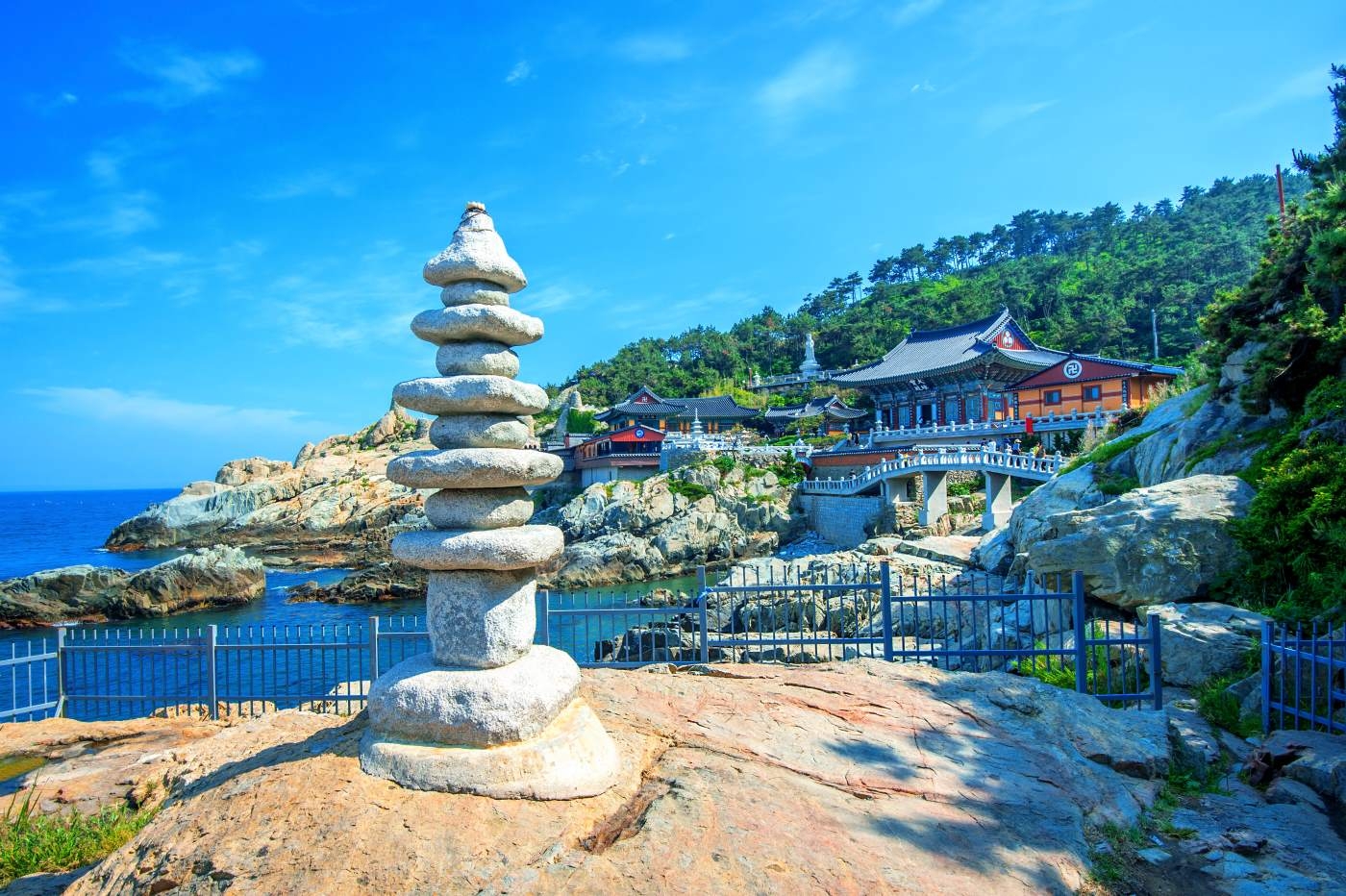 |
| Photo: Budget Your Travel |
With a population of more than 3.4 million, Busan, also referred to as Busan Metropolitan City, is the second-most populous city in South Korea after Seoul. Formerly known as Pusan, it is the economic, cultural, and educational hub of southeast South Korea, with the sixth-busiest port in the world and Korea's busiest port. The largest industrial region in South Korea is the neighborhood "Southeast Economic Zone" that includes Ulsan and South Gyeongsang.
A total of 3.6 million people live in the 15 major administrative districts and one county that make up Busan. There are about 8 million people living in the Southeastern Maritime Industrial Region, which includes the entire metropolitan area. The city's most densely populated regions are found in several confined valleys between the Nakdong and the Suyeong Rivers, with mountains dividing the majority of the districts. Both Busan's Haeundae Beach and Korea's longest river, the Nakdong, are located in Busan.
International conventions are frequently held in Busan, which hosted APEC in 2005. In addition, it serves as a hub for sporting events in Korea, having hosted the Asian Games and FIFA World Cup in 2002. The Shinsegae Centum City, the biggest department store in the world, is located there. In December 2014, Busan was designated as a "City of Film" and added to the UNESCO Creative Cities Network.
A 7-day trip to Busan costs, on average, $1,253 for a single traveler, $2,250 for a couple, and $4,219 for a family of four. The majority of vacation rentals cost between $110 and $380 per night for the entire home, while hotel rates in Busan range from $33 to $149 per night with an average price of $41. Gimhae International Airport (PUS) typically costs $853 to $1,386 per person on international flights in economy, and $2,677 to $4,349 in first class. Depending on the day's activities, we advise allocating $30 to $48 per person per day for travel and dining out.
How affordable can you make a trip to Busan? Travelers who are willing to take standby flights, put up with inconvenience, and otherwise minimize travel costs can get to Busan for about $99 per person per day. Vacation rentals can be reserved for as little as $21 per night, or about 2% of total rentals are available for between $0 and $100. These low-cost accommodations must be reserved as soon as possible and might not be in the most desirable locations. There are more likely to be 1-star hotels available, with rates beginning at about $27.
Prices for international flights range from an average high of $1,386 in mid-December to an average low of $853 in mid- to late-September. The typical flight costs $1,029. Millions of flights were used to determine these prices. Our data for Busan includes 132 airlines and 135 originating airports. Compared to other places, the area has a wider price range. It is obvious that a flight to Busan from Salta (SLA), Salta, Argentina, will be much more expensive than one from Jeju International (CJU), Jeju, South Korea, where a flight costs, on average, just $119.
 Top 10+ Insanely Cheap Places To Travel In The UK Right Now Top 10+ Insanely Cheap Places To Travel In The UK Right Now The United Kingdom is a beautiful destination to visit and explore. If you are on a budget and looking for cheap places to travel in ... |
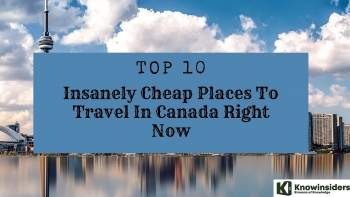 Top 10+ Insanely Cheap Places To Travel In Canada Right Now Top 10+ Insanely Cheap Places To Travel In Canada Right Now Canada is one of the best tourist destinations with many dreamy places that you can ever dream of. It is not easy to find spots ... |
 Top 10 Cheapest Places In The World To Live Comfortably Top 10 Cheapest Places In The World To Live Comfortably There are many affordable and cheap places that can give you a comfortable life without worrying about the money, which is listed in the article ... |
 Top 10 Cheapest Supermarkets in the US Right Now Top 10 Cheapest Supermarkets in the US Right Now What do you think are the cheapest supermarkets in the US? Here are our 10 cheapest grocery stores with lower prices to save money. |




